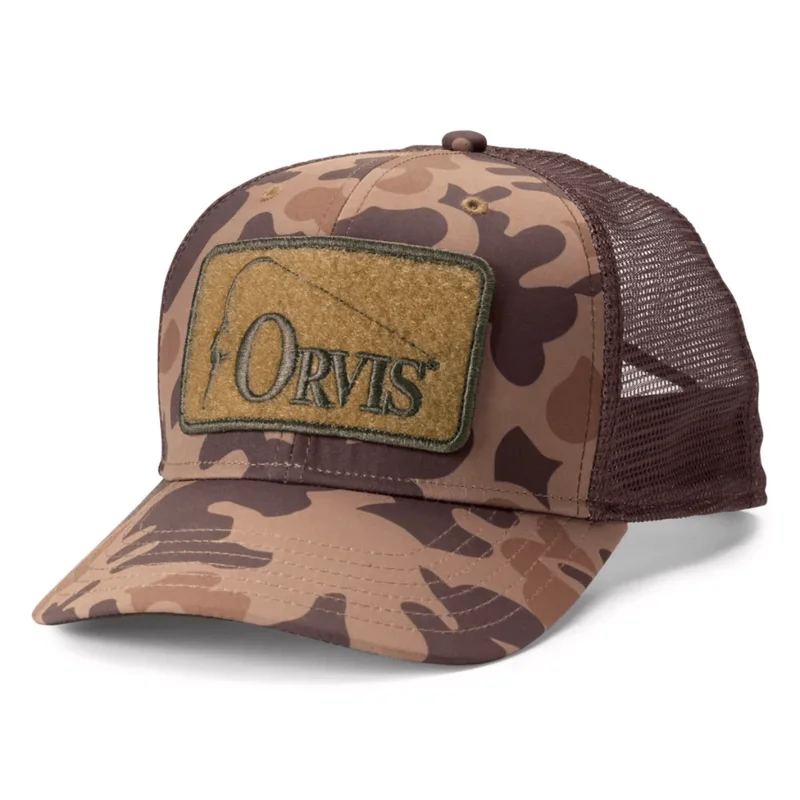Generated Title: Orvis Isn't Dying. It's Performing Radical Surgery on Itself.
I want you to picture it for a second. The inside of an Orvis store. The scent of waxed canvas and cedar, the quiet dignity of a hand-tied fly, the satisfying heft of a well-made `orvis jacket`. It’s more than a retail space; it’s an embassy for a specific kind of life—one lived outdoors, with patience and respect for tradition. So when the news broke that Orvis is shuttering 36 of these embassies, nearly half its fleet, the immediate reaction was predictable: another legacy brand gasping for air in the brutal landscape of modern retail.
The official statement from Orvis President Simon Perkins points the finger at a familiar villain: "an unprecedented tariff landscape." And sure, tariffs are a real, painful economic pressure. They’re a wrench in the gears of global supply chains, and headlines confirm that Tariffs force more Orvis store closures. But to see this story as just another casualty of trade wars is to miss the point entirely.
When I first read the press release, my initial thought wasn't sadness, but a deep, gut-level sense of respect. This isn’t a collapse. This is a calculated, painful, and utterly necessary act of strategic surgery. Orvis is amputating its overgrown limbs to save its heart, and in doing so, it’s writing a playbook that countless other heritage brands should be studying with a magnifying glass.
The Anatomy of a Necessary Retreat
Let’s be clear: the numbers are stark. By early 2026, the `orvis company` will shrink from over 70 locations to just 35. This comes after a year of already painful cuts—layoffs, the end of its legendary 170-year-old catalog, and a move to a smaller headquarters. This isn’t a stumble; it’s a deliberate, multi-stage retreat from the front lines of mass-market retail.
For decades, Orvis played a delicate balancing act. It was the undisputed cathedral for the serious angler, the person who could debate the merits of different `orvis fly rods` for hours. But it also became a “halo brand” for a certain kind of aspirational country living—in simpler terms, it became a place where people who loved the idea of the outdoors could buy a high-quality `orvis shirt` or an iconic `orvis dog bed`. This strategy worked for a long time, expanding the brand's reach far beyond the riverbank.

But that model has become a trap. Trying to be everything to everyone in the age of hyper-specialization and Amazon is a losing game. You end up with sprawling, expensive retail footprints in places where your core customer might not even live, selling `orvis clothing` that competes with a thousand other brands. It’s like a world-class orchestra being forced to play pop songs to fill seats—the quality is still there, but the soul gets diluted. The tariffs weren’t the cause of this identity crisis; they were merely the catalyst that forced the board to finally make a choice. What, exactly, is the soul of Orvis? Is it a clothing store that also sells fishing gear, or is it a fishing gear company that also sells some incredible clothing?
The answer is now brutally, beautifully clear. Orvis is choosing the latter. It is jettisoning the excess cargo of its lifestyle ambitions to save the core vessel of its heritage. The question is no longer "How big can we get?" but "How pure can we be?"
A Return to the Source
This isn't just about closing doors. It’s about re-focusing every ounce of energy on what made Orvis iconic in the first place. Perkins’ statement says it all: "sharpening our focus on the pursuits at the heart of our heritage: fly fishing and wingshooting." This is a return to the very soul of the brand—the smell of river water, the quiet patience of the cast, the intricate art of the `orvis fly rod` still being made by hand in Vermont, it’s a doubling down on the one thing no one else can replicate.
Instead of paying rent on a massive showroom, they’re investing in innovation for their core products, like the `orvis clearwater` waders or their next generation of fly rods. They’re leaning into their direct-to-consumer website and strengthening partnerships with over 550 independent retailers and national giants like Bass Pro Shops—places where the hardcore enthusiast already shops. They’re not abandoning their customers; they’re meeting them on their home turf.
Of course, there’s a human cost to this kind of strategic pivot, and we can’t ignore that. People who loved their jobs and embodied the Orvis brand in their local communities are being impacted. That’s the tragic and unavoidable reality of these decisions. It’s a moment of ethical consideration we must hold alongside any strategic admiration.
But what does this signal for the future of retail? I believe it’s a profound lesson. It suggests that for brands built on authenticity and expertise, the path forward isn’t endless expansion, but radical focus. It’s about building a smaller, deeper, more intense community around a core passion. Could we see other beloved brands, from Barbour to L.L. Bean, follow a similar path, trading square footage for soul? In a world drowning in generic products, is the ultimate competitive advantage to be unapologetically, intensely yourself?
A Brand Reforged in the Fire
Let's call this what it is: a controlled burn. Orvis is sacrificing the overgrown, non-native parts of its business to allow the essential, fire-resistant core to grow back stronger than ever. This isn’t a story about tariffs or the death of retail. It’s a story about courage, identity, and the radical act of choosing depth over breadth. In the 21st century, authenticity is the only currency that matters, and Orvis is making the biggest, bravest investment in its own authenticity in a generation. They aren’t just building for the next quarter; they’re ensuring the Orvis name means something powerful for the next 170 years.
